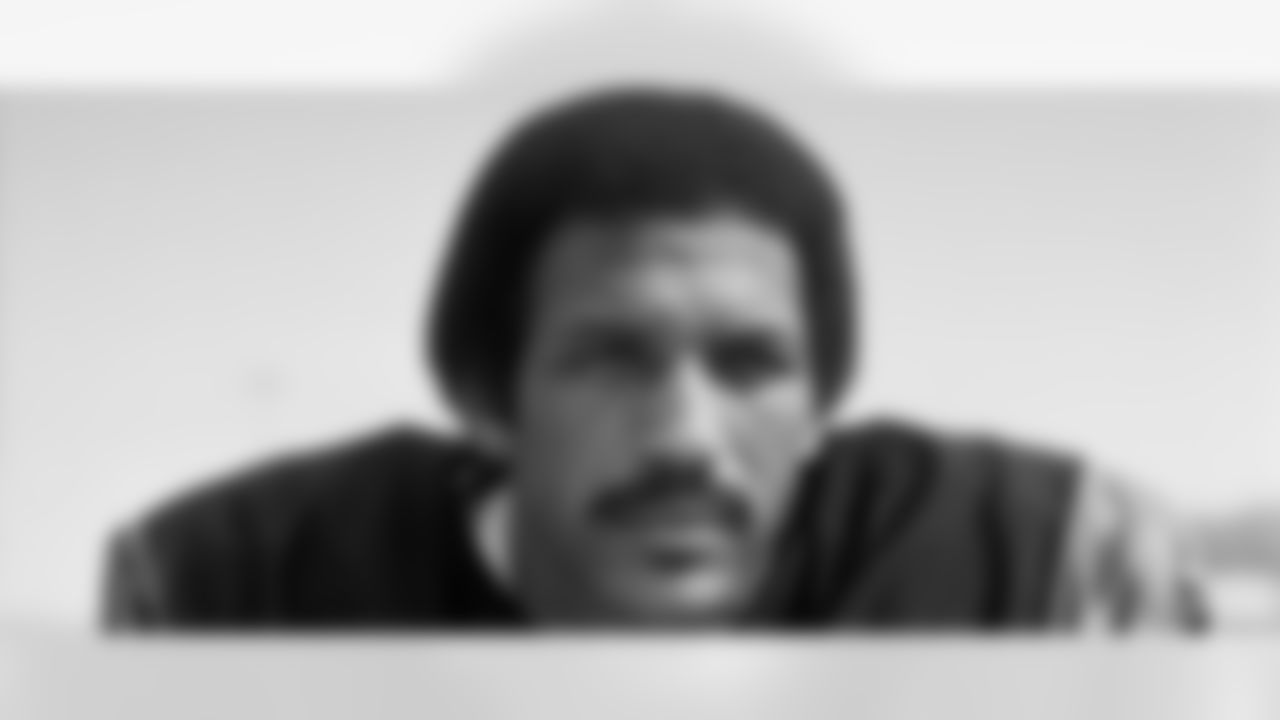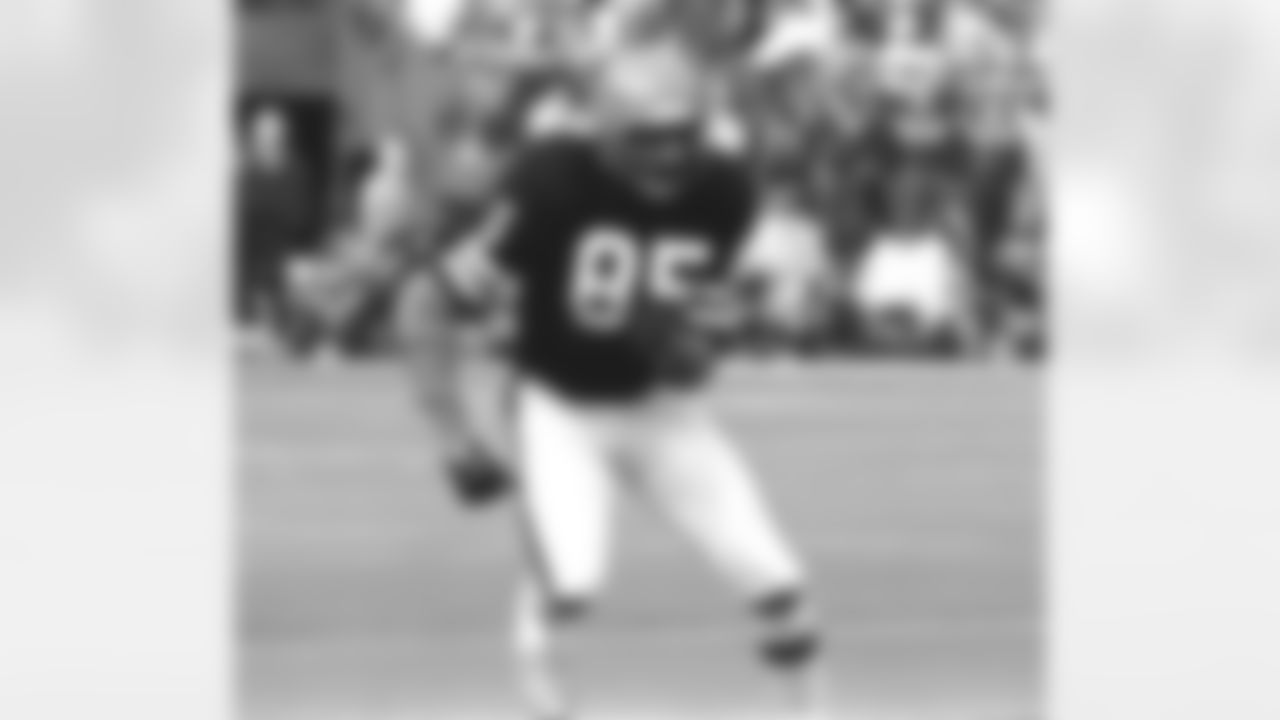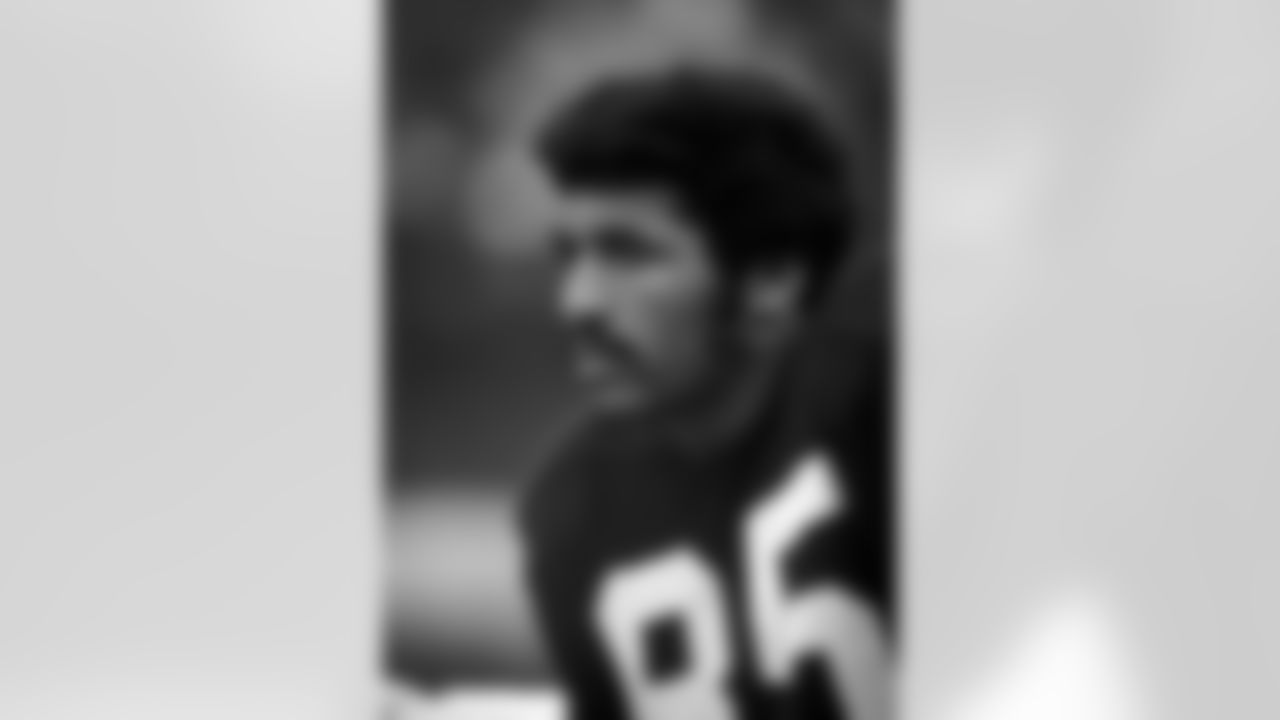by Geoff Hobson
Decades before Joe Cool Burrow sauntered through the fourth quarter, willing and chilling them to a Super Bowl, Isaac Curtis was the coolest cat in the den of Bengals.
From his gliding routes to his simple but classy over-the-shoulder flip to celebrate his touchdown catches, Curtis was effortless. And so it was when the game-changing wide receiver heard he had been voted into the Bengals Ring of Honor by the season ticket holders.
"I was kind of surprised," said Curtis in a breeze from California. "I guess it shouldn't have been. Kenny Riley and Kenny Anderson are in. They're couple of old guys like me."
Bengals president Mike Brown's congratulatory phone calls to Curtis and Willie Anderson are emblematic of the generations represented at halftime of the Sept. 29 game against the Dolphins in Paul Brown Stadium's second Ring of Honor ceremony.
Curtis, 71, whose world-class speed bridged head coach Paul Brown's last and best team in 1975 and the franchise's first Super Bowl team in 1981, thanked "Mike." Anderson, 47, the generational and transitional right tackle drafted at Riverfront Stadium who went to four Pro Bowls at PBS, thanked "Mr. Brown."
Curtis, first honored at a September halftime ceremony in 1985 the year after he retired, is "pleasantly surprised," the fans remembered him nearly 40 years later. Since then, a legion of franchise players have passed through the portal.
"You have a couple of generations that have come through Cincinnati," Curtis said. "Chad Johnson had a great career. We've had a lot of great players. A lot of great players have gone on and done some great things. Cris Collinsworth. Reggie Williams. I've been out of there for quite a while. There have been some really good younger players that are fresher with (the voters) I would think and I'm very honored to go in this early."
For a franchise known for its royal line of wide receivers, it is fitting Curtis is the first one in The Ring. The fans remembered he was the Godfather, the guy who started it all 49 years ago in that stunning rookie year of 1973 when he averaged 18.7 yards per catch for nine touchdowns in the first of five seasons he averaged at least that.
From Super Bowl XVI to Bengals 50, view the best of Isaac Curtis through the years.


Cincinnati Bengals' Isaac Curtis (85) turns away from New York Jets defenders Bobby Johnson (40) and Ken Schroy (48) on his way to a touchdown in the first quarter of AFC playoff action on Sunday, Jan. 9, 1983 in Cincinnati, Ohio. The touchdown came on a pass form Bengals quarterback Ken Anderson. (AP Photo)

Former Cincinnati Bengals wide receiver Isaac Curtis waves to the crowd during a halftime 50th anniversary ceremony of an NFL football game against the Baltimore Ravens, Sunday, Sept. 10, 2017, in Cincinnati. (AP Photo/Gary Landers)

Cincinnati Bengals wide receiver Isaac Curtis, right, has his ankles taped by team assistant trainer Bill Connelly prior to workout in the Pontiac Silverdome, Mich., Jan. 23, 1982. The Bengals meet the San Francisco 49ers in Sunday's Super Bowl XVI. (AP Photo)

Former NFL player Isaac Curtis on stage Bengals draft pick Devon still and Commissioner Roger Goodell during the 2012 NFL Draft at Radio CIty Music Hall on Friday, April 27, 2012 in New York, NY. (AP Photo/Alix Drawec)

Isaac Curtis of the Cincinnati Bengals gathers in a touchdown pass from quarterback Ken Anderson in the fourth quarter of the AFC Playoff at Oakland, Dec. 28, 1975. The touchdown made the score: Cincinnati 27, Oakland 31. That’s Neal Colzie of the Raiders moving in on the receiver. Oakland won, 31-28, and meets Pittsburgh for the AFC championship. (AP Photo)


"Wow. Wow," Ken Anderson, his quarterback, told Bengals.com earlier this year when he reminisced about the first time he saw Curtis. "He had size. He had world-class speed. He was not a sprinter that played football. He was a football player that was also a sprinter. There's a big difference … When you look at his rookie year and what he did he had the same kind of impact on the NFL that Jerry Rice did."
And, how fitting is it the Bengals are playing Miami when Curtis is honored? Curtis and Anderson shot the Bengals to the 1973 AFC Central title, but when the playoffs came head coach Don Shula's big, bad Dolphins took advantage of the rules and mauled Curtis and Cincinnati out of the game.
Paul Brown, a fuming founding member of the NFL Competition Committee, then finished off his successful lobby at the next owners' meeting to liberalize the pass game. "The Isaac Curtis Rule," did as much to change the game as the salary cap, instant replay and MRIs combined. Some on defense saw it as the "Mel Blount Rule," authored by the Steelers rugged future Hall of Fame cornerback. But it was truly the rule where Curtis' speed was the law:
"A defender is allowed to block a receiver within five yards of the line of scrimmage. After the initial yards, any contact will be considered holding, which is a five-yard penalty and an automatic first down."
When Bengals.com took a look back in April on the mechanics of drafting Curtis with the 15th pick in 1973, he recalled what he faced that day in Miami.
"They could hit you anywhere on the field. They would run you out bounds down field," Curtis said. "You'd be 15 yards down field and the cornerback would roll up on you. Or the corner would hold you up and here would come an outside linebacker cutting you. I didn't complain because that's the way the game was played. I was happy when it was changed. It made the game better and opened it up, but it took a while to take hold, too."
What made Curtis change the game was that torrid marriage of blessed hands and ungodly speed. As he savored the news he was going into The Ring, he proudly said he was a football player who just happened to run track.
Boy, was he ever.
Instead of running in the 1972 Olympics, he opted for the trials of Don Coryell and not the 100-meter trials. The Cal-Berkley running back had transferred to San Diego State and switched to wide receiver in Coryell's pioneering passing offense.
"I was running well. I don't think there's any doubt I would have made the Olympic team," Curtis said. "But the problem was, I was a football player first. I was not a track guy. I was transferring and moving positions. It was my senior year. If I made the Olympic team, I would have missed the first part of the football season. I couldn't afford to do that. I was a football player first. I wasn't going to go to the trials, bump somebody off the team and then turn around and not to go the Olympics. I was a football player first."
Curtis and his Cal teammate Eddie Hart were the top two sprinters in the country. He remembers they pretty much traded wins and in the 1970 nationals Curtis says they virtually finished with the same time. He says the officials wrongfully called him for jumping the start and when he had to lay back, Hart got the ever-so-slight edge. It's the only time in the NCAAs that teammates finished 1-2 in the 100-meter finals.
Curtis figures he would have also run the 200 meters and the relay. Hart broke the 100 world record in the trials, but never got a chance to be the world's fastest man because a tragic scheduling error in Munich got him disqualified. He did anchor the relay gold medal team in a world-record run, but Curtis never looked back.
He thought he was going to Cleveland. But the Browns were drafting 16th and were left with Steve Holden, he of 62 career catches.
"I had such a great relationship with the fans and they've always showed me their appreciation and it made me feel so good," Curtis said. "I was very fortunate to be in Cincinnati because there was another place I almost ended up. I'm glad that didn't happen. I'm so appreciative of being in Cincinnati. It's really a treat they voted me in."
If Curtis is the quintessential Paul Brown player on the field with that game-breaking deep speed, he is certainly the classic successful PB player off it. Late in his career he worked in the offseasons for the Cincinnati-based hotel management and development company Winegardner and Hammons and then became the company's long-time director of sports marketing.

Listen Now - Bengals Booth Podcast: Glory Days
It's the "Glory Days" edition of the Bengals Booth Podcast as I visit with the 2 newest members of the Bengals Ring of Honor – wide receiver Isaac Curtis and offensive lineman Willie Anderson.
He's retired and back in his native California these days, but the Bengals are never far from his thoughts. One of his best friends remains teammate Louis Breeden, who still lives in Cincinnati, and they hooked up last November to watch the Bengals play in Las Vegas.
Curtis always enjoyed his teammates. It says something about a guy who says his favorite NFL moment isn't from the '70s, when he made them change the game, but from the '80s, when he didn't have the same weekly impact but his team won.
"I got to play in a Pro Bowl when I was a rookie and that was fun, but it wasn't like playing on that team that went to the Super Bowl," Curtis said of the 1981 season. "That was a really fun year and that team was close. I think that everybody who comes into the league has that goal of playing in an AFC championship game and a Super Bowl. That was fun. I enjoyed winning and playing."
The fans must have enjoyed it, too, because the man they would sometimes call "Ice," is now chilling in The Ring.

Ring of Honor
The official source of Bengals Ring of Honor nominees, inductees, and more.


























